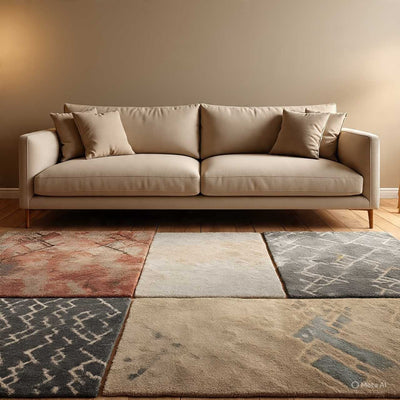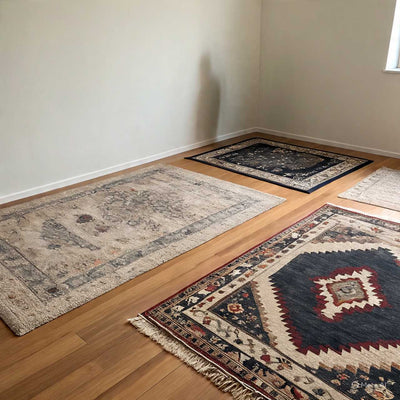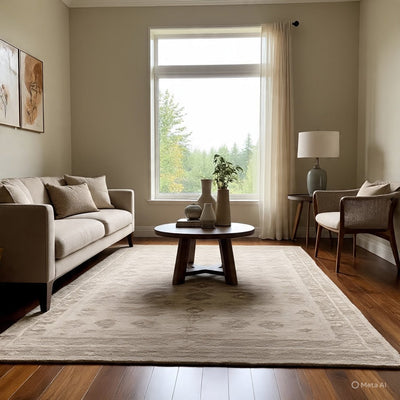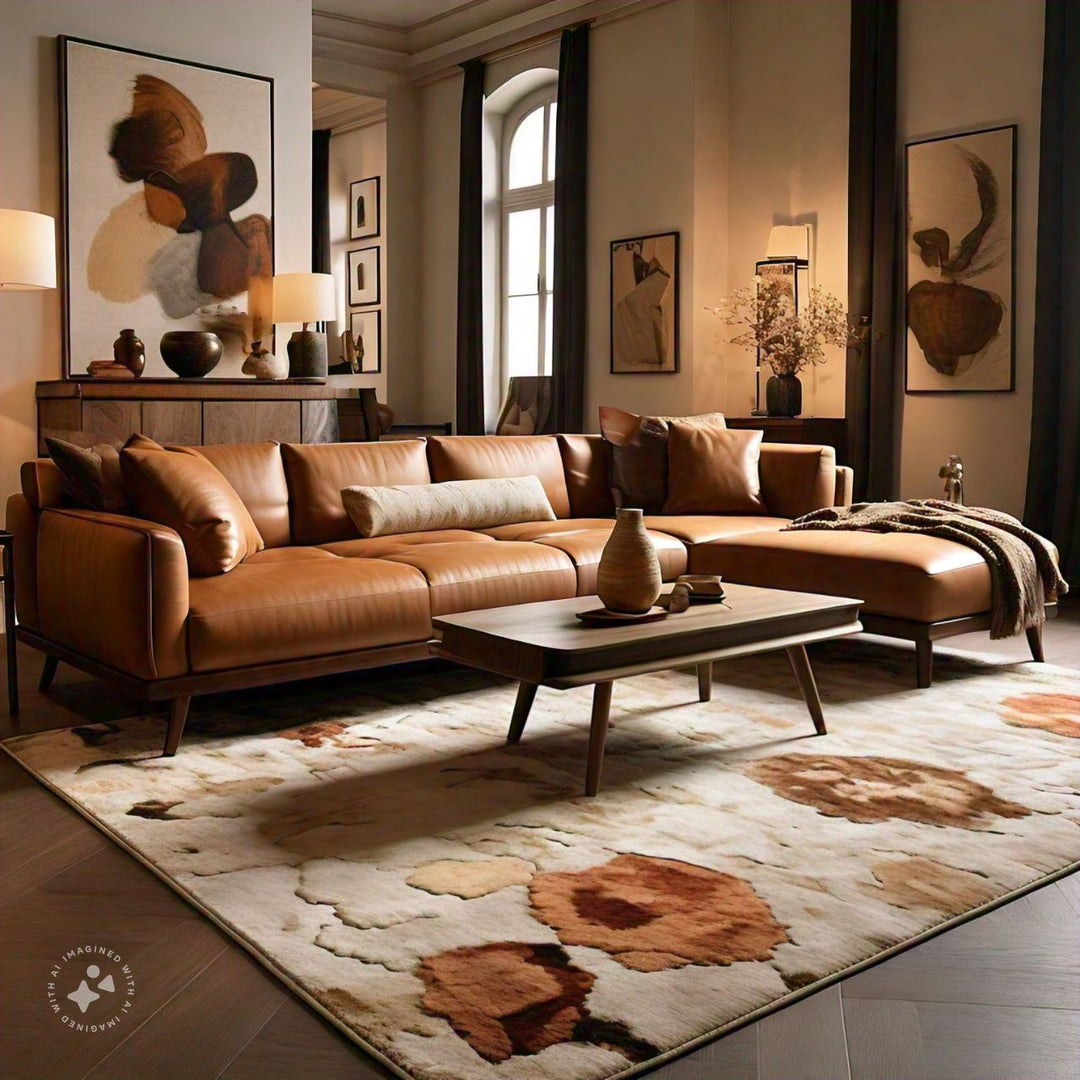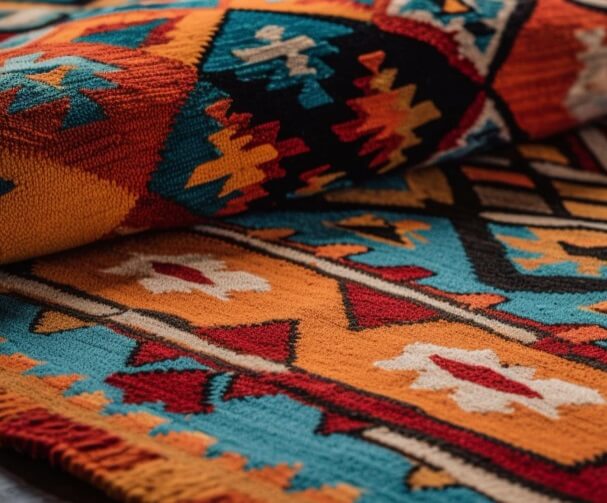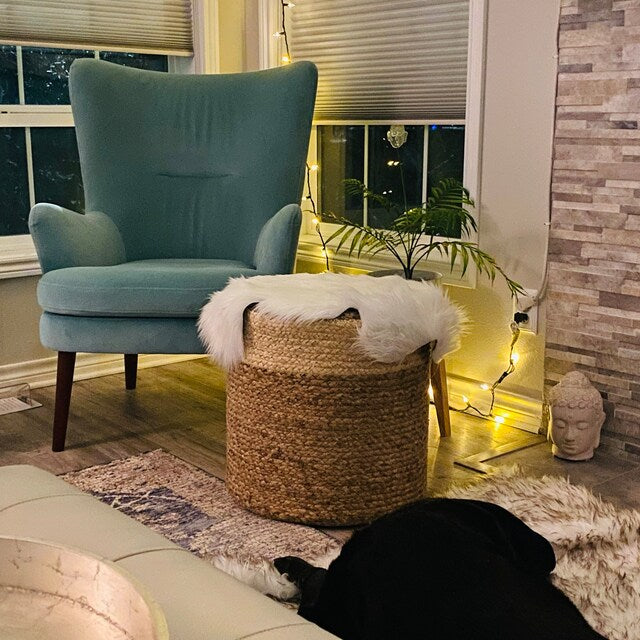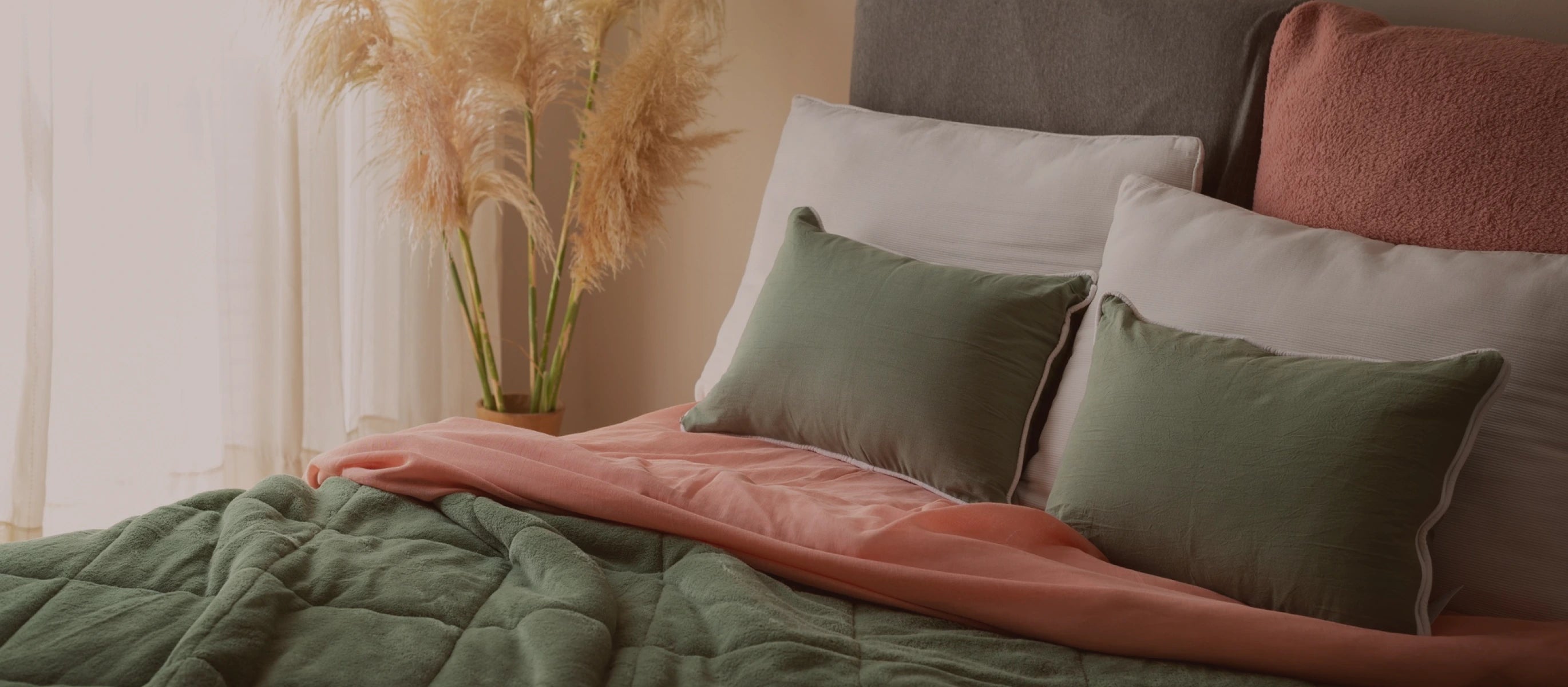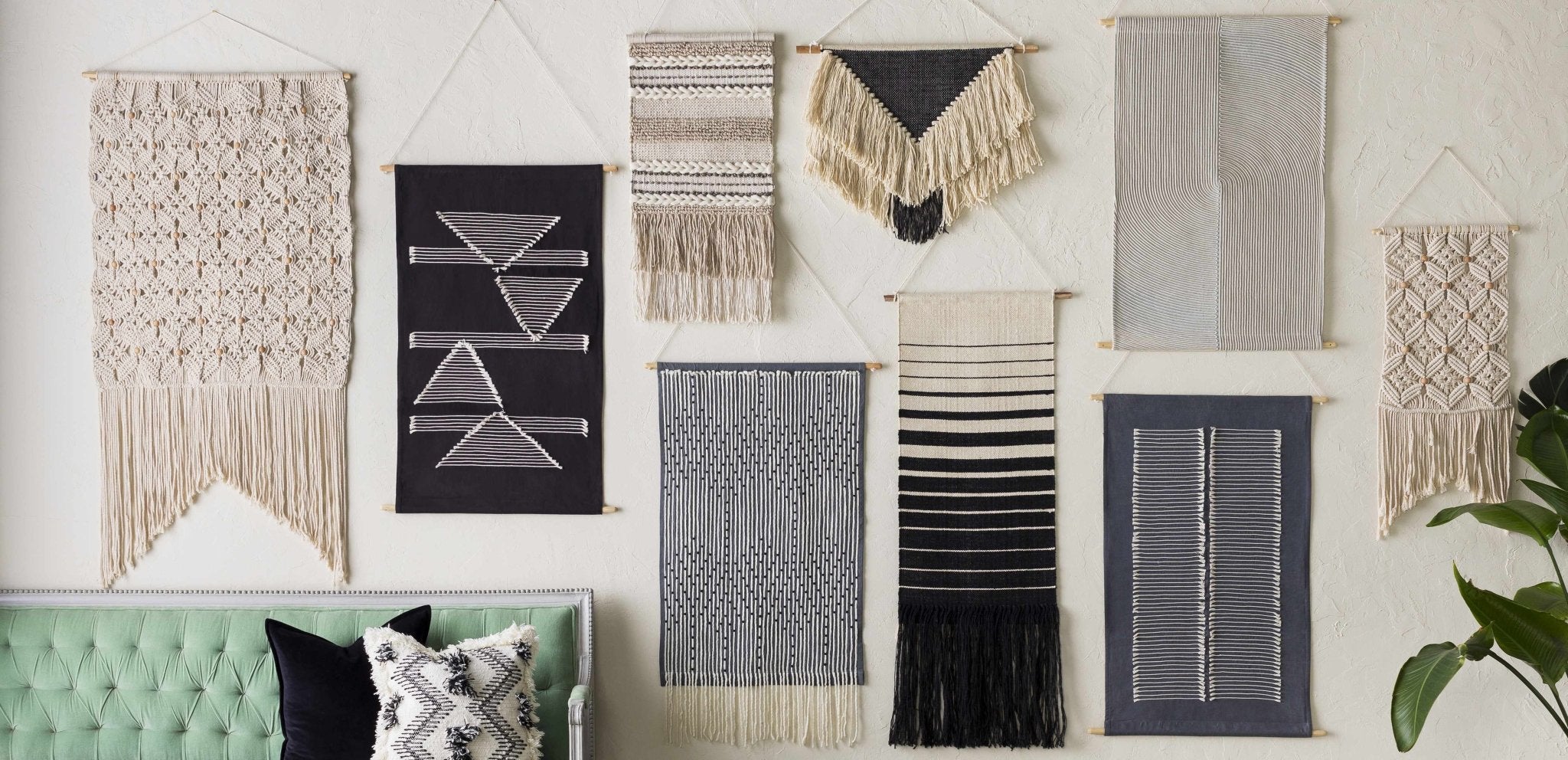What Is a Kilim Rug and Why You Need One? A 101 Guide
Picture this…
You walk into a room, and instantly you feel like you’re in a foreign land, one that’s rich in culture and tradition. That’s the power of a Kilim rug.
Kilim rugs are handwoven and originate from Anatolia, Turkey. They are deeply rooted in Turkish heritage and are stylish yet practical. They can seamlessly harmonize with a traditional or modern decor setup. Whereas, for the practical part, they protect your floors with grace and provide the perfect amount of insulation against noise and temperature.
So, where are Kilim rugs from, and how can you weave them into your space (pun intended)…
Our beginner’s guide has all the answers. Read on!
What Makes a Rug a Kilim?
The term "Kilim" is of Turkish origin, meaning a pileless rug with multiple uses. Originally, the nomadic tribes in the the rural areas of Turkey and Persia would traditionally weave the Kilim rugs in a way that they were portable and durable. This is because they would use them as floor coverings, cushions, storage bags, and tent decorations. Today, variations of the Kilim rugs are being created in various parts of the world. For instance, the Berber tribes in North Africa have produced variations of the Kilim rugs. They feature tribal motifs and geometric designs in natural dyes. Kilim rugs when weaved in Persia also make them a subset of Persian rugs.
As for what are Kilim rugs made of? Wool, a durable, warm, and natural fiber, is commonly used to make Kilim rugs and is known from its resilient texture. However, Kilim rugs are available in cotton, silk, or even animal hair. These materials help to improve the rug’s durability, softness, and sheen. The vibrant colors in Kilims rugs are often achieved using natural dyes derived from plants, minerals, and other organic materials.
Remember, the quickest way to identify an authentic Kilim rug is to examine its material. The wool should feel flexible when you apply gentle pressure. It shouldn’t be too soft, dry, or stiff.
How Are Kilim Rugs Made?
Manual tools like a loom, beating comb, and knife/scissors are used to weave Kilim rugs, handcrafted by artisans. Kilm rugs are primarily wool rugs. Cotton, silk, and animal hair are also used sometimes, along with wool. It is skillfully woven by expert craftsmen using the Slit-weave technique.
It’s a technique where colored warps (vertical threads) and wefts (horizontal threads) are interlaced to form the base of the Kilim flatweave in sharp geometric designs. However, the weavers can showcase their creativity by weaving Kilims in beautiful floral motifs too. This technique also helps to maintain the rug’s structural integrity.
The Durability & Softness of Kilim Rugs
Adding a Kilim rug to your decor means welcoming a masterpiece that is cradled in centuries of tradition. Each piece brings the warmth and comfort of wool woven from nature’s finest fleece. This means that our Kilim rugs are not only soft and plush, but they also meet daily resilience. They are perfect for all high-traffic areas like your living room, kitchen, and hallway.
Ready to embrace tradition like never before? Shop our Kilim rugs today!
The History and Cultural Significance of Kilim Rugs
The origin of Kilim rugs dates back to when nomadic people would use them for practical purposes such as blankets, saddle blankets, seat mats, or wall decorations.
As per tribal traditions, Kilim weaving had an intimate connection to a woman’s life cycle. Women would weave Kilims before getting married to prepare for married life. During their marriage, they would weave Kilims for their children and to decorate their homes. Towards the end of their lives, they would weave Kilims for their own funerals, which would then be donated to the mosques. This tradition reflected their devotion towards their family, culture, and spirituality.
Did you know, Tribal symbols are woven codes that are represented through Kilim motifs that have a deeper meaning?
They were used to inform, communicate, and convey ideas. Years later, these symbols turned into myths and came to represent hidden meanings within the spiritual, philosophical, or religious traditions. Believe it or not, some of the designs may not be for decorative purposes, but they are believed to have a psychological meaning.
How to Care for a Kilim Rug?
A well-maintained Kilim rug ensures lasting beauty. Here’s how you can care for your rug.
-
Dust the rug on both sides using a broom to brush off the dust.
-
Make the cleaning solution by mixing ½ cup of hand-cleaning carpet shampoo or any mild soap, 1 tbsp of white vinegar, and 4 ½ cups of warm water.
-
Wash the rug by spreading the solution evenly throughout the rug. With a soft brush, gently scrub the entire rug. The water temperature should be 100°F.
-
Vacuum both sides of the rug on a low suction setting to prevent the wool fibers from getting damaged. Avoid vacuuming the fringes.
-
For spills, spot clean by blotting the affected area immediately with a clean sponge or paper towel. For tougher spills, create the same cleaning solution as mentioned above and scrub gently.
-
For pet stains, treat them immediately if it hasn’t dried yet. Add baking soda to the affected area, let it sit for about 30 minutes, then vacuum it. If a faint stain is still there, use the same cleaning solution as mentioned above and scrub gently.
Consult with a professional rug cleaner periodically to give your rug a deep clean. It will keep your Kilim rug looking gorgeous for years to come.
Other Tips:
-
Regularly rotate the rug to promote even wear.
-
Keep the rug away from direct sunlight as it may cause discoloration.
-
Vacuum and dust the rug regularly.
-
Do not pull loose threads. Use scissors to cut them off.
-
If the rug is placed under heavy furniture, use rug protectors.
Related:
Guide on cleaning a Wool Rug
Cleaning Outdoor Rugs: Step-by-Step Care Instructions
The Rug Decor’s Range of Kilim Rugs
A Kilim rug is the perfect choice if you want to add a piece of ethnic decor to your home. You can pair them with Bohemian interiors to create an eclectic aesthetic. Explore our range of Kilim rugs in Contemporary and Tribal designs as well. They are available in fresh colors and patterns, adding a pop of creativity to any space.
Bonus: A Kilim rug is reversible and it is a type of flatweave rug that is lightweight. This makes it very convenient to move around and clean the space under it.
Shop our Kilim rug collection today!
FAQs
What is the Difference Between Kilim and Dhurrie Rugs?
While they may have many similarities, Kilim rugs are predominantly made from 100% wool or animal hair, whereas Dhurrie rugs are made from cotton, wool, and silk. When it comes to designs, geometric angular and repetitive patterns are typical in Kilim rug designs. Whereas, Dhurrie rugs feature free-flowing designs in pastel colors.
Are Kilim Rugs Washable? If so, how do you wash them at Home?
Yes, Kilim rugs are washable. Start by making a cleaning solution of ½ cup carpet shampoo, 1 tbsp white vinegar, and 4 ½ cups lukewarm water. Spread the solution evenly throughout the rug and scrub with a soft brush. Rinse the rug with lukewarm water and let it dry.
Are Kilim Rugs Durable?
Yes, Kilim rugs are highly durable. For centuries, they’ve been used as prayer rugs or to decorate the floors of mosques, homes, and other buildings. They work well in high-traffic areas. Also, because they are so durable, they can be passed down as family heirlooms.
Where can Kilim Rugs be Placed at Home?
A small Kilim rug can be placed at the entrance for a more welcoming entryway. You can also use a runner rug in your hallway for a dramatic aesthetic. In your living room, place it in an accent area to make it stand out. For a pop of creativity in your bathroom, place it next to your bathtub.
Also Read:
